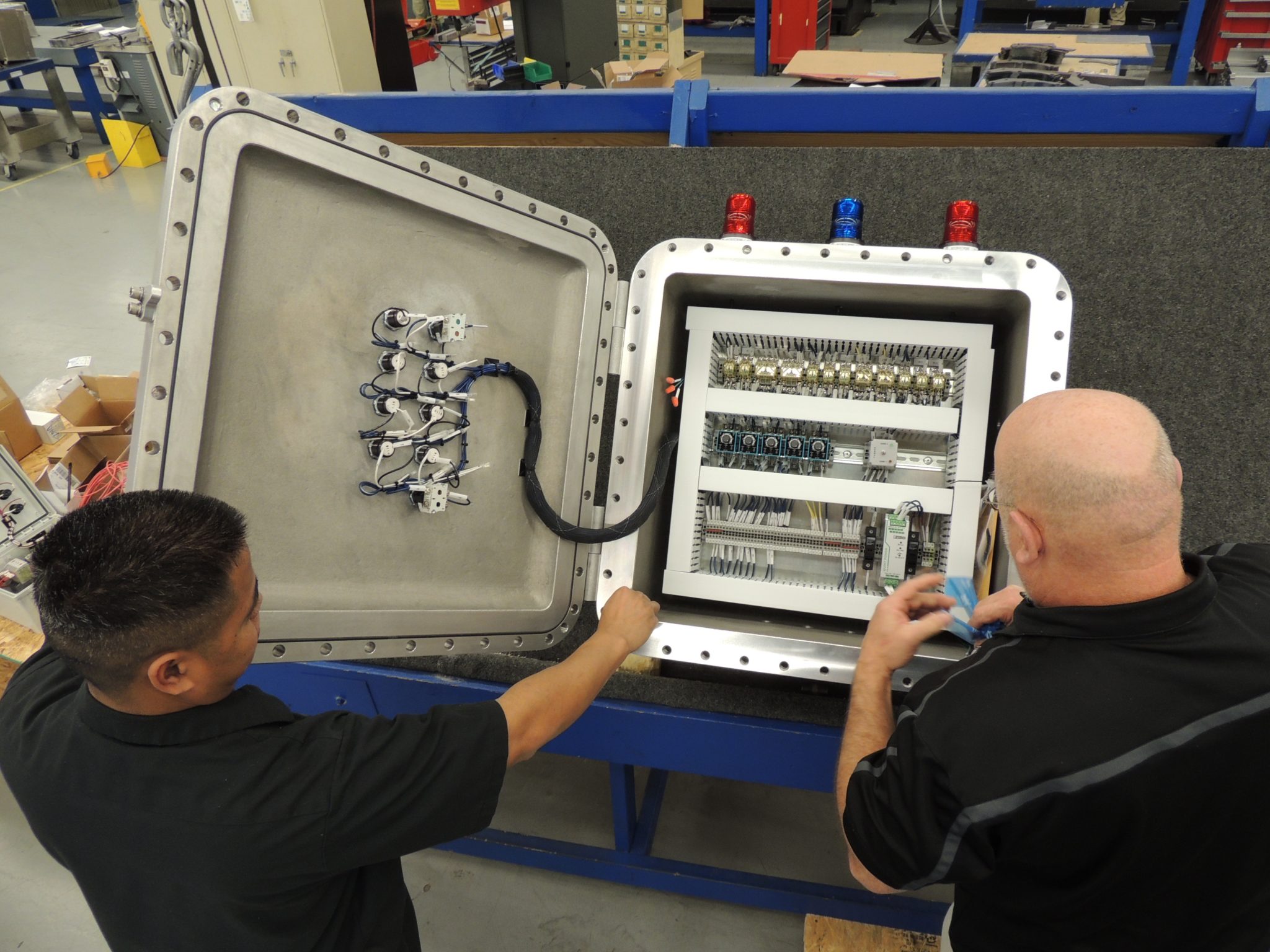Quality Control Practices Every Manufacturer Should Use
Quality is of enormous importance when it comes to manufacturing. If companies want to succeed, they must concentrate on producing goods of a caliber that will satisfy or even exceed the expectations of their customers.
A business that produces high-quality goods will maintain customer satisfaction levels that will encourage repeat business. The success of any company, whether it be a small operation or a massive multinational company, depends in large part on quality control. Quality is one of the main aspects that keep businesses in the game of a highly competitive market.
Here are a few reasons why quality is worth pursuing:
- obtaining repeat business
- obtaining recommendations from present clients
- improving client satisfaction
- increasing the bar for safety
- lowering liability for subpar items
- improved profitability, effectiveness, and productivity
To be a quality-driven organization, demanding work is required. Standards of outputs, evaluation of effective processes, and pinpoint areas that may use improvement.
Some techniques to enhance quality control in manufacturing plants are covered in this article.
Quality Control Practices Every Manufacturer Should Use
Manufacturing businesses wanting to increase quality control must use all available resources.
Businesses should take proactive measures to avoid quality control problems before they arise and to give them a better understanding of the areas that require additional attention.
Companies may reduce risk and improve overall operations by having quality objectives and a solid understanding of the procedures that result in higher-quality products.
The good news is that most of these actions are common sense guidelines and are easy to implement.
- Create sound procedures
- Make Sure Managers Have the Right Training
- Keep Your Workspace Tidy
- Equipment Tests and Maintenance
This article will look at each of these crucial practices to give businesses the best chance to enhance quality control in manufacturing.
1. Create sound procedures
To improve quality control, production-related procedures must first be strengthened. By streamlining these procedures, the product is more likely to satisfy the demands of the business. Businesses must ensure that the techniques used to develop, test, and create products are correct.
Here are some ideas and techniques for creating better procedures and enhancing quality control in the manufacturing industry.
Set Quality Standards
In most businesses, quality requirements must be followed before and after production. Sometimes an industry group or a government regulatory body will set these criteria.
Businesses may need to create their own set of quality control standards. These should be a collection of quantifiable metrics that can be used across departments and unique to the step’s point of production or service.
Companies may better organize their operations around the areas that stand to gain the most from changes by concentrating on the manufacturing processes that are most crucial for quality control.
Use Operational Processes to Solve Problems
Companies may utilize such measurements to identify areas that require improvement if standards are established and are used as a yardstick to gauge the quality of each stage in the production process.
To do this, businesses must define a step-by-step process flow and incorporate benchmarks that aid in identifying the specific regions that need to meet quality requirements.
Look at success or failure indicators to find methods of streamlining. These indicators can help improve the process to increase the overall quality of the results.
Review the Outcomes
To track results connected to quality control, businesses should use technology at every level. Companies may better know where the gaps are and handle quality control concerns as soon as they arise by using software that identifies outliers in real-time.
To identify quality control concerns at the point where they arise, it is crucial to review quality as the product passes through the production line.
Companies must deal with the waste of resources and labor if a problem with the raw materials arises, yet manufacturing is permitted to continue to the completed product.
See ATRONS high-level look at the overall flow and interaction of the company’s systemic cycles involved in fulfilling our mission.
Gather Feedback
Sometimes it is simple to identify quality control problems, but other times businesses need to rely on data from other sources to get a clearer picture. Utilizing quantitative client feedback is an excellent method to find problems that might need to be clarified at the production level.
Companies may obtain a comprehensive picture of consumer satisfaction concerning quality by using targeted surveys, product ratings, and reviews acquired from internet sources. They may then use that information to determine their net promoter score (NPS) and utilize that calculation to monitor their progress toward enhancing quality control.
Make Data-driven decisions
When gathering data and inputs, it is crucial to compile data and feedback into a sound body—then evaluate how to enhance quality control in the manufacturing process.
Quality control work should continue even after problems have been found and procedures have been enhanced. There must be regular supervision to pursue continuous development and ensure that the best goods are being provided to clients.
2. Make Sure Managers Have the Right Training
Companies must ensure that their managers and supervisors are a mirror for adequate adherence to quality control and safety procedures since reasonable quality control starts with management. Processes for quality control are likely to be successful if management effectively supervises team members.
The first step in developing a solid management team is training. Additionally, such training must cover how to create and enhance quality control and safety procedures. Companies can guarantee that managers understand the significance of strengthening quality control in manufacturing by providing direct and focused training on these themes.
Here are some guidelines on the kinds of education and training managers must possess about quality control procedures.
General Training
Make sure management is aware of the general significance of quality assurance and control. Stress the importance of these metrics for business performance, client happiness, and adherence to safety and compliance standards.
Training Specific to your industry
There may be rules and guidelines that must be followed that are particular to the manufacturing a firm undertakes. Managers should be aware of the regulatory entities in charge of policing quality assurance and safety standards in their sector and the specific needs of each of these bodies.
Companies may take advantage of the industry-specific training offered by these agencies or organizations to ensure their team is educated in these subjects.
Develop Your Training Method
Companies should create their own standards if no industry-specific norms or benchmarks are established for a given procedure. Managers must be able to comprehend, apply, and monitor employee performance about each unique set of established criteria.
Cross-Train Your Employees
Cross-training for managers and supervisors is necessary to ensure they comprehend the expectations of their departments and the firm’s. Employers should aim to hire managers who can oversee numerous divisions and, as a result, fill vacancies as they arise.
Get Certified
Companies should attempt to get managers certified in quality assurance training depending on the relevant oversight committee. Companies can use a variety of certificates at various levels and in a variety of sectors.
It sets an excellent example for everyone in the organization that quality assurance and safety are essential to the business by having a management team that has received the necessary training and certifications. Additionally, it guarantees that managers do not slough off in a training session, giving businesses a technique to assure a thorough comprehension of the subject.
3. Cleanliness should be a Top Priority
The manufacturing floor and every other space should be kept as clean as possible. A cluttered and disorderly workstation increases the risk of potential harm and may result in mistakes that degrade quality.
Plant floors are already a dangerous workplace, but when businesses place a low priority on hygiene, it gets much worse. Regardless of the sector, slips, trips, and falls are the leading cause of injuries at work.
Before they set foot on the manufacturing floor, every employee should know the value of order and cleanliness. A company’s mission statement and values should make maintaining a safe workplace a vital goal, and this lets employees know that their well-being is a crucial concern.
User visual aids
Visual aids assist in reinforcing the value of cleanliness and serve as a reminder to staff that taking shortcuts poses an unacceptable danger on the factory floor. Consistency may be maintained with a clear sign in the proper location to remind staff to double-check cleaning standards.
Delegate
Cleaning should be a chore that is outsourced to the staff rather than being an afterthought. Ensure workers are fully aware of their responsibilities before, during, and after shifts—delegate leadership with the power and obligation to monitor cleaning task compliance.
Document
Documenting cleaning methods aids in both defining expectations and assisting managers in identifying workers or circumstances when standards are not being fulfilled. In suitable cases, checklists should be used to ensure no corners are cut.
Utilize supervisors
Make Use of Supervisors to ensure that workers adhere to standards at each production line stage.
Employees who are not adhering to standards should get counseling and additional training. Supervisors must record the procedure so there will be a paper trail if infractions persist.
Training
Every new hire should get training in the value of maintaining a spotless and accident-free workplace. Make sure the course is finished before any work starts and think about periodically retraining staff to emphasize how essential cleaning practices are.
The training should include detailed instructions and methods for difficult or hazardous cleaning jobs. Make sure staff members are thoroughly trained before having them do cleaning-related maintenance on large equipment.
To prevent damage, emphasize how crucial it is to clean up spills and messes as soon as they occur.
4. Equipment Tests & Maintenance
As a type of safety and equipment pop quiz, businesses should conduct user testing on machinery and equipment. This procedure is crucial for any business that wishes to enhance quality control procedures in manufacturing and ensures that all employees are productive and safe while at work.
Randomized testing gives businesses a behind-the-scenes peek at how effectively workers adhere to safety and quality control rules and keep the machinery running at peak performance.
Here are several strategies businesses may employ to increase quality control during production, including unscheduled equipment use checks.
Be unpredictable
The fact that these examinations are unplanned and unanticipated is crucial. This ensures that businesses have an accurate picture of how their staff thinks and behaves in terms of standards compliance, productivity, and safety.
Make it Common
Although not planned, these tests need to happen often on the manufacturing floor. Employees need to be aware that their behavior and training might always be questioned, and this will inspire them to abide by rules and maintain compliance continually.
Perform Regular Maintenance
Regular maintenance of machinery and equipment is vital to identifying worn-out parts or parts that are simply not operating at peak performance levels. Ensure preventative maintenance is performed, and coach technicians to document and communicate when equipment is in danger of failure.
Identify Crucial Components
Be careful to note the components essential to preserving the manufacturing line’s productivity. Specific inventory categories need to be considered when creating a supply of spare parts.
Most of the time, consumables are connected to production-related raw materials. Always ensure that these supplies are on hand in case of a delayed shipment or a damaged delivery. Make sure the appropriate rotation of these items is always being observed.
Take Notice
Ask pertinent questions to assess how effectively personnel comprehend and use quality control and safety standards. Please pay close attention to how safety precautions are followed and record any instances where the responses deviate from the norm or where staff training appears inadequate.
When Necessary, Retrain
Implement extra training opportunities for staff if random testing reveals a failure to comprehend or comply with safety regulations.
In Conclusion
ATRON has a definite and measurable advantage over competitors. Customers deserve high-quality products; any small failure will lead to customers shopping elsewhere in the future.
We develop specific processes and procedures at every level of the production process to meet and exceed quality criteria consistently. By employing training, testing, planning, and strategy, we maximize our capacity to maintain quality control requirements.
Every aspect of ATRON adheres to the concept of continual improvement.












